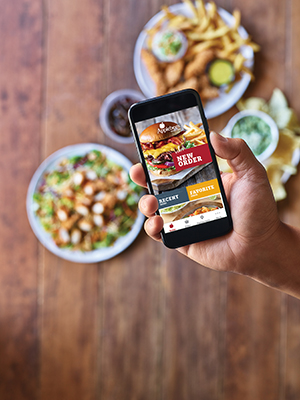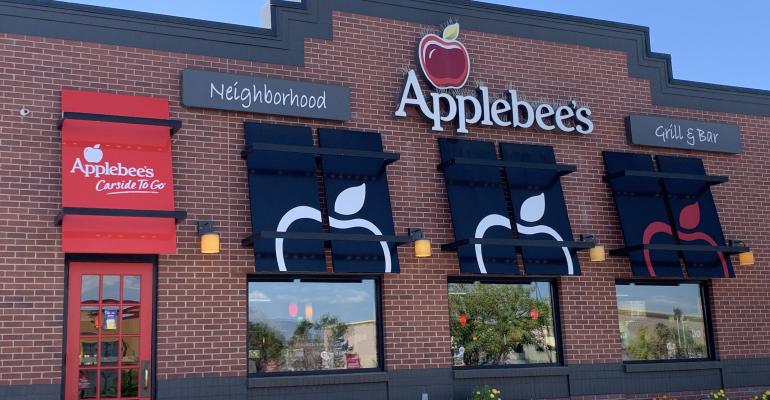With the rate of inflation rising to near double digits in the U.S., consumers are tightening their belts and cutting back on discretionary purchases.
Exactly what is discretionary, however, may vary based on each individual’s situation. In the minds of many hungry, time-starved consumers — especially Gen Z and millennials — paying a delivery fee to enjoy a restaurant meal may be considered an affordable expense and factor into the value equation.
“Consumers clearly seem to have placed a value on delivery,” said David Portalatin, foodservice industry advisor at The NPD Group. “Even in the current environment, where total delivery is not growing year over year, there are plenty of [operators] doing well, and growing, with delivery.”
The added cost of delivery does weigh into consumers’ decision about how to procure their food, but other factors also loom large, he said.
“Price always matters, but over time, price is actually becoming a little less important,” said Portalatin. “What is changing things is consumers who are increasingly looking for quality and variety, or consumers deciding that they deserve a treat or a reward.
“That’s what restaurants specialize in: providing quality food and making sure customers are treated or served well,” he added.
Also adding to the value of off-premises dining is that consumers have become more “home centric” compared to before the pandemic — including many who now work remotely — resulting in more meals being consumed at a customer’s place of residence. In fact, 41% of restaurant meals are now consumed at home, Portalatin said, citing NPD Crest research.
“What happens inside the four walls of our home is more important than it was before, and it probably always will be,” he said.
Young consumers value experiences
For younger consumers in particular, the experience of having restaurant-prepared meals delivered is often worth the added cost of delivery.
More than a quarter of Gen Z consumers (27%) say delivery is their preferred method of obtaining food from restaurants, according to research from technology solutions provider Medallia. That compares to 21% of consumers in all other age groups who prefer delivery.
“Even as inflation has hit consumers pretty hard, they haven’t really curbed their delivery spending,” said Andrew Custage, head of insights and market research at Medallia, during a recent webinar. “It’s held pretty flat, or even increased modestly, and compared with three years ago they are spending well over triple what they were before.”
Ticket size for delivery orders also remains high, as inflation doesn’t appear to have had a negative impact on the size of delivery orders, he said.
Meredith Sandland, CEO of technology firm Empower Delivery, said young millennial and Gen Z consumers today have a much different mindset than many older generations had when they were that age. She describes today’s young consumers as being the “renting rich” as opposed to the “house poor” — they are not taking on mortgages at a young age, and not necessarily saving to buy a home, giving them more flexibility to spend money on other things, including restaurant dining experiences.
“They are about doing whatever they want to do, whenever they want, and wherever they want, and that means having food come to them is highly valued, and they are willing to spend money on things like that,” she said during the Medallia webinar.
Operators focus on execution, promotion
Restaurant operators for the most part seem to be focusing on providing value in their takeout and delivery offering by emphasizing high levels of service and convenience, but also incorporating deals to appeal to those consumers seeking to get the most for their delivery dollar.
 Photo: Plans are in the works for upgrades to both the Applebee’s mobile app and Applebees.com in 2023.
Photo: Plans are in the works for upgrades to both the Applebee’s mobile app and Applebees.com in 2023.
At Applebee’s Neighborhood Grill + Bar, off-premises dining, branded Applebee’s To Go, remains an important element of the company’s business, accounting for 24% of sales in the third quarter, said Vicki Hormann, executive director of off-premises at Applebee’s.
“Understanding the value of convenience and being able to deliver on it is at the heart of our off-premise guest experience,” she said. “We are always looking for ways improve our To Go guest experience.”
Plans are in the works for upgrades to both the Applebee’s mobile app and Applebees.com in 2023, Hormann said.
In addition to focusing on making online and app-based ordering more convenient, and therefore more valuable to its customers, Applebee’s also uses promotions to support its positioning as an affordable and value-based brand. The operator offers national deals throughout the year on its website and through its mobile app, such as its recent Halloween Wings promo offering free boneless wings and delivery with a purchase of $30 or more when ordered online for takeout.
Another similar promotion is the chain’s National Cheeseburger Day Burger Bundles, which offer a burger, fries and fountain drink for $10.99 when ordered online.
Applebee’s also partners with several third-party delivery service providers to offer free delivery and other promotions, when available, said Hormann.
“We consistently provide guests value-oriented promotions designed specifically for our off-premises guest available at Applebees.com and on the Applebee’s mobile app for delivery and Carside To Go pickup,” she said.
Some operators are seeking to exert control over the value their customers derive from the off-premises experience by taking delivery in-house or encouraging first-party ordering for delivery rather than going through third-party platforms such as DoorDash, Grubhub or Uber Eats.
Oak Brook, Ill.-based Portillo’s, for example, in 2020 began rolling out in-house delivery for certain orders, alongside its third-party offerings.
“Our in-house delivery model allows us to monitor and control the process from the time of the initial order to the final delivery for our larger orders,” said Dino Northway, director of off-premises dining at Portillo’s. “This makes it possible for us to ensure that we’re providing an exceptional experience for our catering guests every time, right up until the moment they get their food.”
He said the chain is focused on providing value in the form of high levels of execution in its drive-thru and online ordering for pickup channels, as well as offering sharp pricing regardless of channel.
“We know consumers are facing a number of pressures from inflation in their day to day lives, so we’ve intentionally focused on preserving value for our guests,” said Northway, noting that the company has focused on ensuring that its menu pricing lags inflation.
The strategy is working, he said, citing guest satisfaction scores that continued to trend higher in the third quarter.
The value of first-party ordering
Carl Orsbourn, COO at restaurant technology provider Juicer, and co-author with Sandland of Delivering the Digital Restaurant, said the current environment may be an ideal time for restaurants to highlight the savings that consumers can derive from ordering directly from a restaurant’s website or mobile app.
The Medallia research revealed that many of the pain points that consumers have around third-party delivery involve price and value. For example, not wanting to pay delivery fees or tips has always been the most common reason for not ordering delivery, but it’s grown steadily in terms of importance to consumers. It was cited by 46% of consumers in September of this year, compared with only 35% of consumers in October 2020.
In addition, when asked what would make third-party delivery better, the top four answers cited by survey respondents were all value-oriented: 39% said lower delivery fees; 32% said menu prices on par with ordering in person; 25% said more promotions or offers; and 22% said more loyalty points or rewards for using the same app often.
Orsbourn, who also participated in the Medallia webinar, said he expects that consumers’ expectations around delivery execution will rise amid rising food prices, and that restaurants will increasingly adopt technology solutions for menu optimization and other efficiencies that help drive a more profitable delivery model. That could include dynamic pricing, a solution (offered by Juicer) in which items cost more during busy periods than they do during down times.
It's a strategy used by other industries, such as car services Uber and Lyft, and could help restaurants drive more off-premises sales and profitability.
According to Medallia’s research, 73% of consumers surveyed would support a dynamic pricing solution.
“I think we are getting to a place where dynamic pricing is something that can be utilized to address some of the challenges in the delivery ecosystem,” Orsbourn said.

